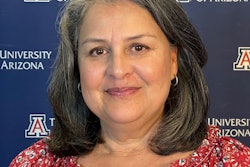Responding to the demands and needs of Asian-American Students, the University of Maryland, College Park, expands course offerings related to culture, identity.
Every time Dr. Larry Shinagawa teaches his “Introduction to Asian American Studies” course at the University of Maryland, College Park, he finds that 10 to 20 percent of his students are adoptees. Among other things, they hunger to better comprehend the social and political circumstances overseas leading to their adoption.
In response, UMD officials hope to roll out a new course on “The Adoptee Experience” as early as next year, Shinagawa says.
It’s one of many progressive efforts at UMD funded in part by a historic, two-year $2.4 million grant now in its second year.
That grant, awarded under the federal Asian American and Native American Pacific Islander-serving institutions program, helps expand programming and outreach at postsecondary schools with significant Asian enrollments. The program joins its counterparts such as predominantly Black institutions (PBIs) and Hispanic-serving institutions (HSIs) in assisting underrepresented, disadvantaged populations.
UMD is one of only six schools in the inaugural class of those federally designated as Asian-serving. The others are City College of San Francisco, South Seattle Community College, the Foothill-De Anza Community College District, University of Hawaii at Hilo and Guam Community College.
“We’re elated at being in the pioneering wave of Asian-serving schools,” says Shinagawa, associate professor of American studies and director of Asian American studies.
“A significant portion of our students don’t fit the ‘model minority’ stereotype.” Asian Americans make up about 15 percent of UMD’s student body. Shinagawa says the majority are so-called “1.5 immigrants” who came to the U.S. as children and became the first in their family to attend a U.S. college. Chinese and Koreans are perhaps the largest subgroups. Adoptees are growing increasingly common. Many of their adoptive parents are White, middleand upper-class but unable to personally provide cultural education, identity and consciousness.
“They’re extremely curious about where they came from,” Shinagawa says of the Adoptees. “They latch on to student clubs and groups. Sometimes it’s the first time they’ve ever been around other Koreans or Chinese.” He says a course on “The Adoptee Experience” would help them – and others – better understand China’s one-child policy and how and why it has caused many people there to give up infant girls.
And, better understand the cultural stigma in South Korea that burdens unwed mothers, causing them to give up children. Or, the sociocultural belief among some parents there that their children are better off in U.S. schools – and therefore with adoptive parents – than in the more-rigorous, hyper-competitive Korean education system.
A course focusing on transnational adoptees is one of many being planned at UMD. Others are likely to examine multiracial populations as well as Asian American film and media. Shinagawa is also making the Asian American curriculum more ethnic-specific; UMD already offers courses such as “South Asian American Communities” and “Filipino American History and Biography.” Asian-serving grant monies have allowed expansion of the Asian American studies program, established in 2000, by adding graduate assistantships and other personnel.
Without the grant, Shinagawa says, the Asian American studies program couldn’t afford to be on-site coordinator of next year’s annual conference of the National Association for Ethnic Studies.
Dr. Karen Kurotsuchi Inkelas, an associate professor in UMD’s college student personnel program, says a vibrant Asian American studies curriculum at any predominantly White school does much more than help young people develop self-identity.
Inkelas cites a University of Michigan study in which 80 percent of Asian American students reported thinking seriously about what that racial label even meant – largely because of courses they took there. “Those students were more likely to support affirmative action, more likely to commit to community engagement.” “Some people may think Asian American studies is mere noise,” Inkelas says, “but it’s really a cafeteria of opportunities in which we look insularly as well as outwardly. Students can become more engaged citizens.” UMD is the only academically selective member of the inaugural class of federally designated Asian-serving schools. It was granted an Education Department waiver from some of the criteria, which includes demonstrating significant financial need.
Shinagawa says he sought the waiver because of UMD’s regional and national presence in the academic field. UMD, for instance, houses one of only two U.S. Census Information Centers devoted to Asians.
Shinagawa hopes UMD’s designation as an Asian-serving school helps other state fl agship institutions with large Asian enrollments receive future consideration.
“There are so many great Asian American programs,” he says. “If they have demonstrated a commitment to students, and if there’s been a history and concerted efforts to address their needs, they ought to be considered.”


















